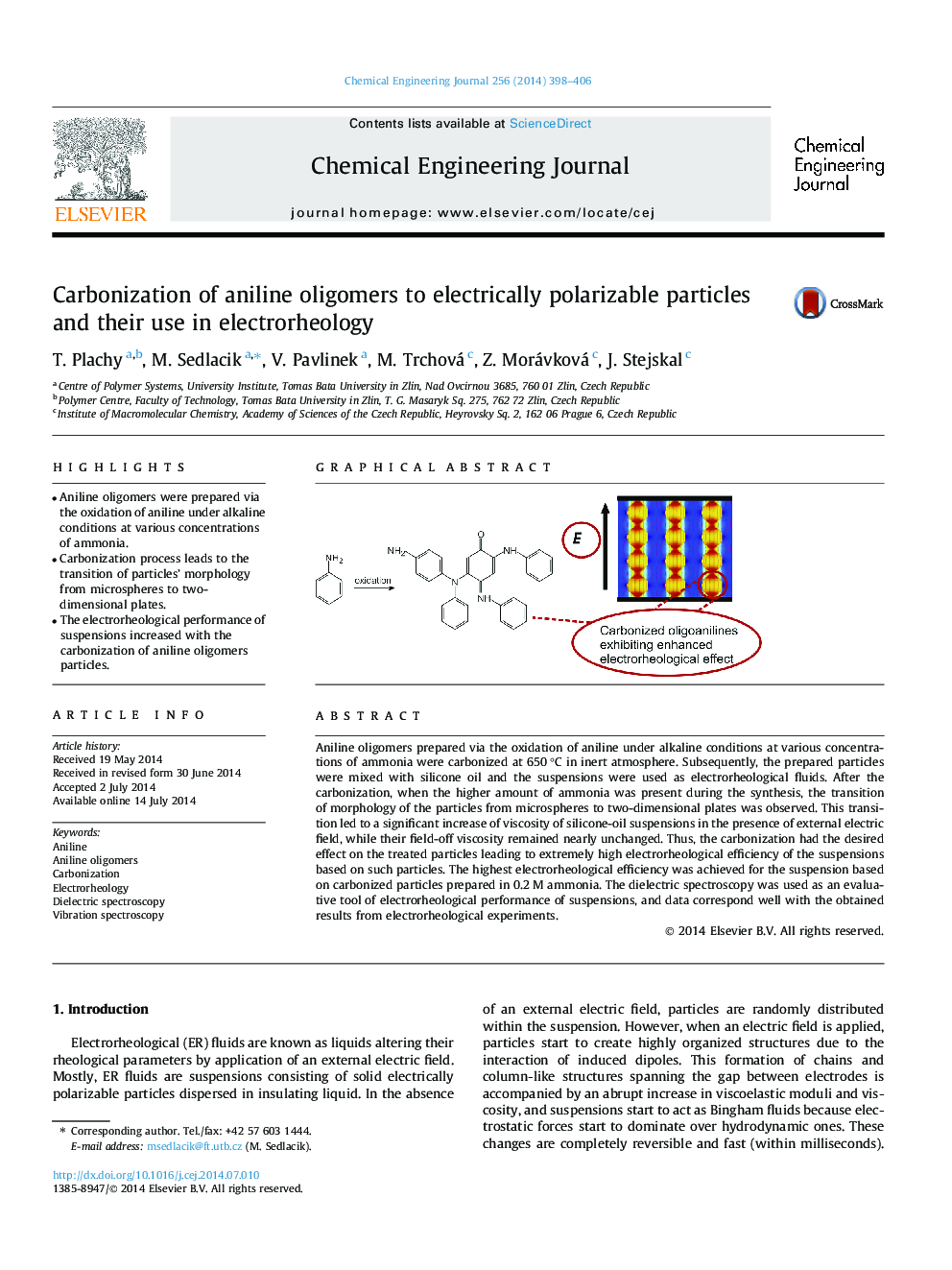| Article ID | Journal | Published Year | Pages | File Type |
|---|---|---|---|---|
| 147033 | Chemical Engineering Journal | 2014 | 9 Pages |
•Aniline oligomers were prepared via the oxidation of aniline under alkaline conditions at various concentrations of ammonia.•Carbonization process leads to the transition of particles’ morphology from microspheres to two-dimensional plates.•The electrorheological performance of suspensions increased with the carbonization of aniline oligomers particles.
Aniline oligomers prepared via the oxidation of aniline under alkaline conditions at various concentrations of ammonia were carbonized at 650 °C in inert atmosphere. Subsequently, the prepared particles were mixed with silicone oil and the suspensions were used as electrorheological fluids. After the carbonization, when the higher amount of ammonia was present during the synthesis, the transition of morphology of the particles from microspheres to two-dimensional plates was observed. This transition led to a significant increase of viscosity of silicone-oil suspensions in the presence of external electric field, while their field-off viscosity remained nearly unchanged. Thus, the carbonization had the desired effect on the treated particles leading to extremely high electrorheological efficiency of the suspensions based on such particles. The highest electrorheological efficiency was achieved for the suspension based on carbonized particles prepared in 0.2 M ammonia. The dielectric spectroscopy was used as an evaluative tool of electrorheological performance of suspensions, and data correspond well with the obtained results from electrorheological experiments.
Graphical abstractFigure optionsDownload full-size imageDownload as PowerPoint slide
